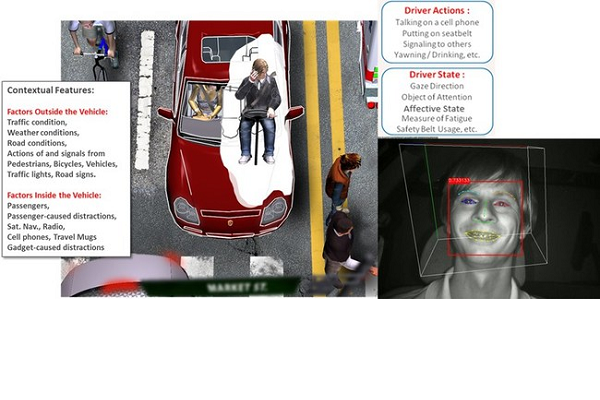SRI and Toyota Debut Proactive ‘Emotional AI’ for Cars

Researchers at SRI International have developed an artificial intelligence designed to detect and respond to the emotional state of car drivers. The new technology combines visual analysis of driver behavior with proactive responses to improve driver safety.
Visual Emotional Cues
SRI developed its Emotional AI technology to be able to detect a mix of non-verbal cues from drivers. The AI picks up on obvious behaviors like talking on the phone and where the driver is looking as well as more subtle signs of eye and head movement and blinking patterns. Based on what it observes, SRI claims the AI can determine the driver’s mood and wakefulness and proactively respond. For instance, a driver that appears tired or close to falling asleep at the wheel might get a blast of cold air in the face, a loud noise played over the car’s speakers, or even a voice assistant suggesting they pull over before they endanger themselves and others. In a less life-or-death scenario, if the AI judges that the driver is sad, it might suggest a more scenic route to take to cheer them up.
Toyota is integrating SRI’s tech into its LQ concept car. The LQ appeared at the Tokyo Motor Show this past week and people will be able to test drive them at the Tokyo 2020 Summer Olympics in 2020.
“Imagine a vehicle that applies deep learning AI to infer emotions and estimate the driver’s state,” Toyota LQ chief engineer Daisuke Ido said in a statement. “By working with SRI to develop AI technology that monitors the driver, Toyota can advance safety technology and peace of mind to a higher level.”
Cars Reading Drivers
SRI said that the visual component is only the first phase of its Emotional AI work. Audio cues are also on its agenda, which makes sense as voice assistants are a growing component of new cars. With more AI in vehicles, the ability to understand a driver’s behavior will likely become more common. Nuance Automotive (now an independent company called Cerence) showed off its own technology in this space at CES in January and plenty of car companies besides Toyota are testing their own emotional AI systems, including Kia, Volvo, and General Motors.
Detecting and responding to a driver’s emotional state is a step beyond the standard voice assistant operations. They are always reactive, responding to people, not initiating an interaction. The exceptions so far ar the home healthcare voice assistants like Pria and LifePod, which need to be proactive in order to help ensure the care of their owners. If the AI in a car is proactive and people are comfortable with it, it’s not impossible to imagine it spreading to smart speakers at home or voice assistants built into smartphones.
Follow @voicebotai Follow @erichschwartz
Ford Adds Wake Word and Simultaneous Platform Support to SYNC 4 Voice Assistant








